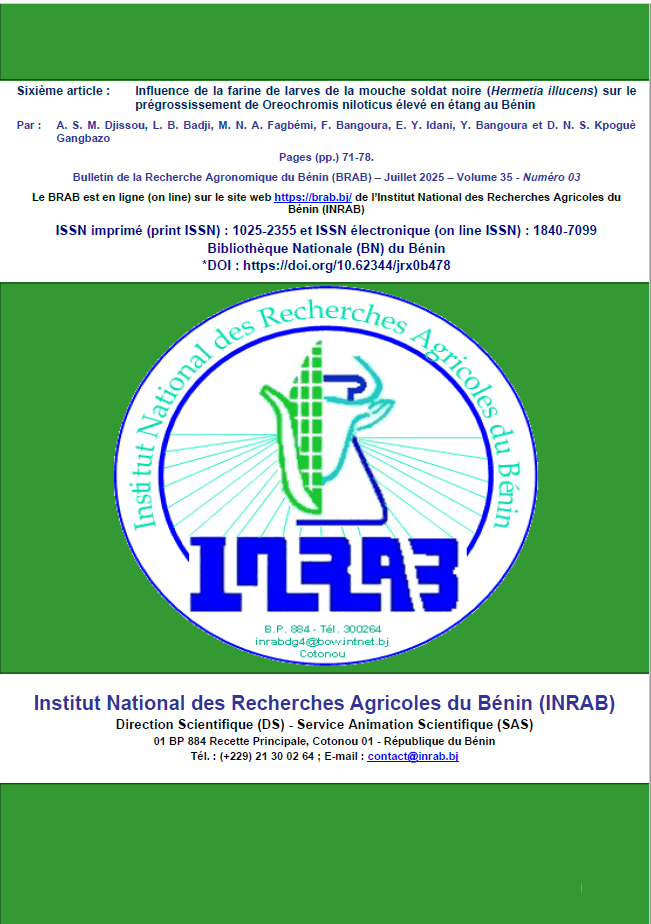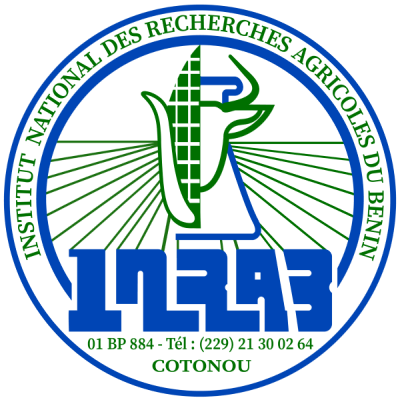Influence of black soldier fly Hermetia illucens larvae meal on the pre-fattening of Oreochromis niloticus reared in ponds in Bénin
DOI:
https://doi.org/10.62344/jrx0b478Keywords:
Nile tilapia, maggot meal, zootechnical performance, prospects, BeninAbstract
A trial was initiated in order to assess the influence of black soldier fly larvae meal on the zootechnical performance of Oreochromis niloticus fingerlings reared in ponds in Benin. Three iso-protein and iso-lipid diets (imported BioMar feed; fish meal-based feed; feed containing 45 % black soldier fly larvae meal) were tested on 7g of fingerlings for 35 days. Each diet was tested in triplicate. The feeding frequency was three times a day. At the end of the experiment, the zootechnical parameters were calculated. The physico-chemical parameters measured remained in line with the requirements of the species. The results obtained at the end of the trial showed no significant (p>0.05) difference between O. niloticus fingerlings fed the different diet. Thus, the feed conversion ratio values observed during the study varied significantly (p<0.05) depending on the diets tested (1.98 ± 0.10 to 2.27 ± 0.10), unlike the specific growth rates, which varied from 2.39 ± 0.40 to 2.57 ± 0.23 %/day. Fingerlings fed with feed based on black soldier fly larvae meal showed the best growth and feed utilization performance. The study reveals that black soldier fly larvae meal can replace fish meal in the diet of Oreochromis niloticus fingerlings reared in ponds without impairing their zootechnical performance.

Published
Issue
Section
License
Copyright (c) 2025 Bulletin de la Recherche Agronomique du Bénin

This work is licensed under a Creative Commons Attribution-NoDerivatives 4.0 International License.
Les articles publiés par le Bulletin de la Recherche Agronomique du Bénin sont en libre accès. Ils sont gratuits pour tout le monde, immédiatement téléchargeables dès la publication et distribués sous la licence CC BY-NC-ND (https://creativecommons.org/licenses/by-nc-nd/4.0/).







